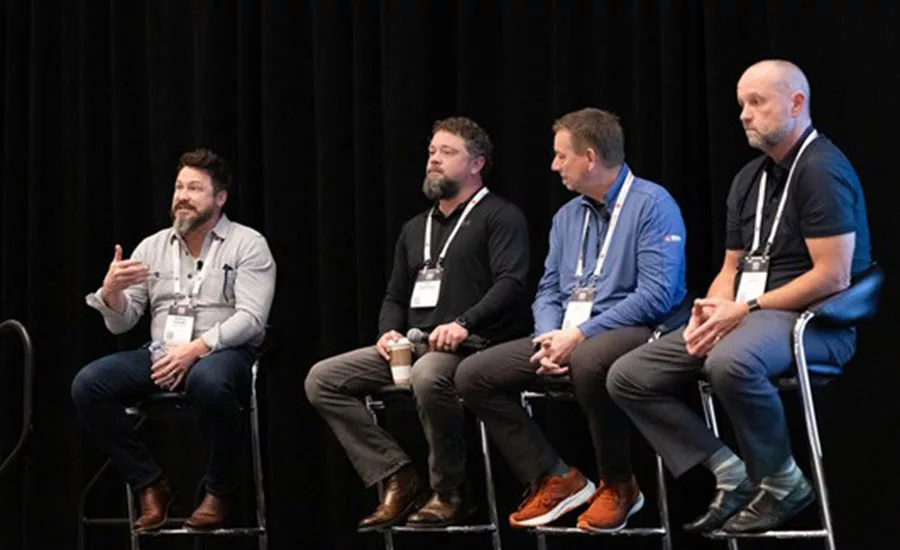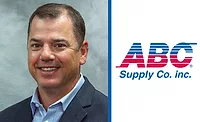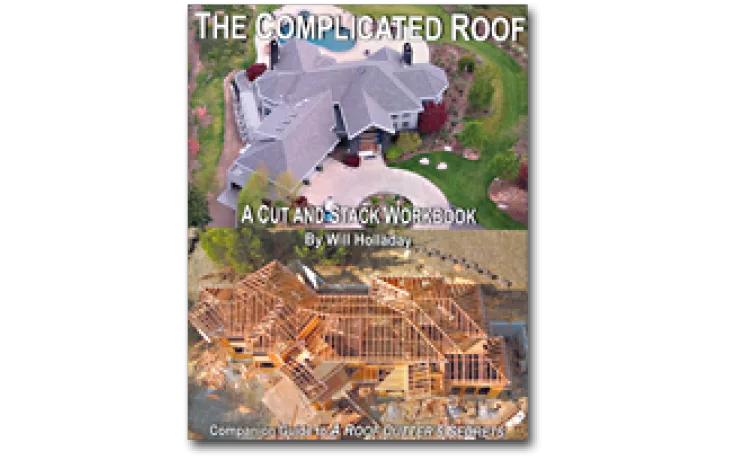Roofing Industry Q&A: Owens Corning's Gunner Smith
Gunner Smith explains Owens Corning’s position in the market and why adding a 14th shingle plant is an opportunity to enhance the company’s reach
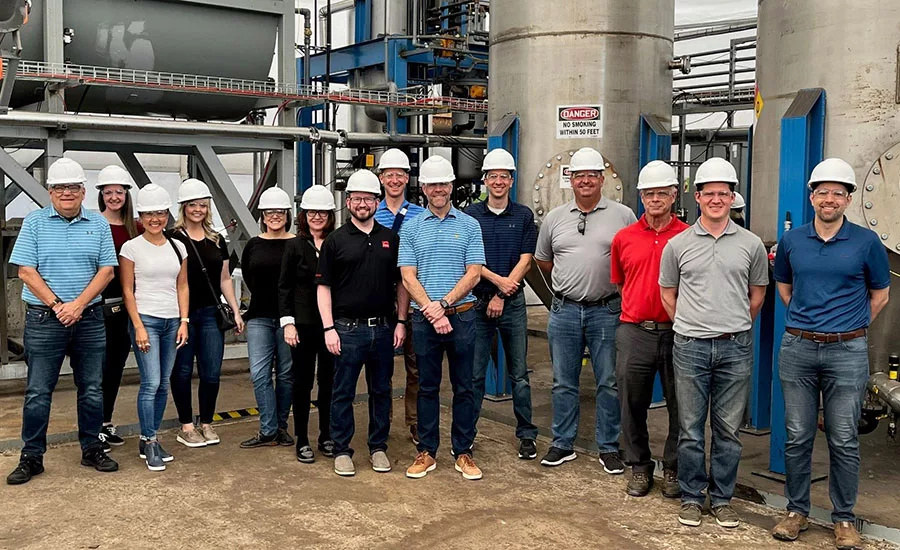
All photos courtesy of Owens Corning
Owens Corning has been a big part of the roofing industry for decades but is entering new territory in 2025. For starters, the company announced it will expand shingle manufacturing with a new southeastern U.S. facility set to open in 2027. It will be the first new shingle plant the company has ever built in the U.S., and marks the latest example of Owens Corning’s commitment to long-term strategic investments that will drive future growth, said Roofing President Gunner Smith.
Smith wasn’t quite ready to disclose the exact location — which is expected to be announced later this year — but did sit down with RC at the 2025 International Roofing Expo in San Antonio to discuss that decision, other initiatives and the emerging trends impacting the industry’s overall success.
There’s clearly a lot at stake. Despite challenges in Q4, 2024 proved to be a robust year for the company, boasting net sales of $11 billion and earnings of $647 million. During our conversation, Smith said the expansion presents a unique opportunity to meet future market demands while streamlining and modernizing key production lines. He believes the impact will be broader than feeding a specific, growing roofing market.
He also emphasized how they’re working on more than just transacting products with contractors, but offering help to achieve their business goals through training, education and building their entrepreneurial skillset. Check out the highlights of our conversation here.

Owens Corning at the 2025 International Roofing Expo.
Owens Corning kicked off the year with plans for a new shingle facility in the southeastern U.S. by 2027. Tell us about that big announcement.
Gunner Smith (GS): It’s been a multi-year journey to increase our capacity. We have a growing contractor demand, a growing distributor demand, and as a result, we see ourselves butt up against regional or storm-based pinch points where we could use more capacity. It started with investing more than historically in our current footprint of plants. We’re very happy with that process and it became clear to us that we had even more of an opportunity and need.
What will be made there?
GS: There’s been a fast, or accelerated conversion from 3-tabs or strips to laminates in the industry, which puts additional stress on capacity because they’re totally different manufacturing lines. Last year, we announced we’re converting our Medina, Ohio, plant 3-tab line to a laminator, which will come online [mid-year]. We’re going to build a new, 4-wide laminator in the Southeast — commonly known to produce 6 million squares of shingles.
How did you decide on that region for this investment?
GS: It’s an opportunity to service the fastest-growing roofing market in the nation, and a market that certainly has a lot of ups and downs with storm activity. The opportunity presented itself and it became clear to us over this journey that we needed another investment there.
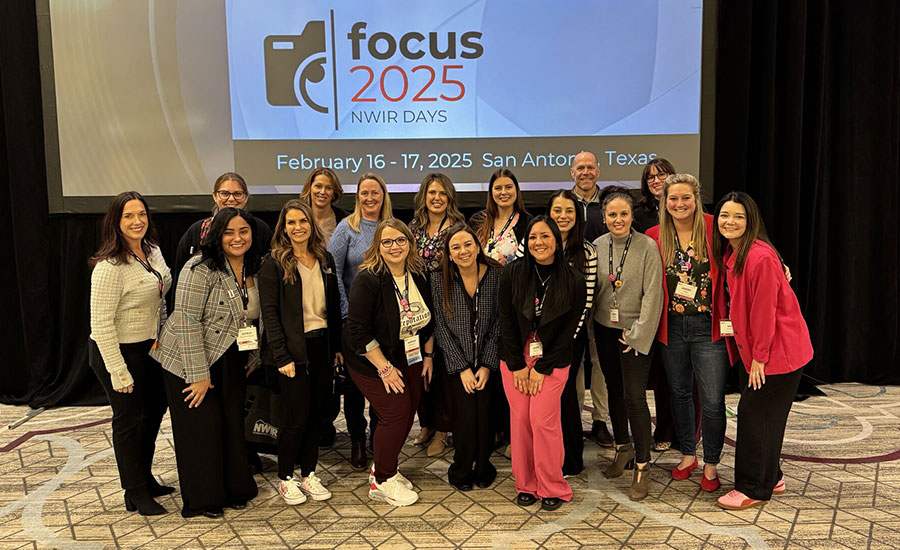
Smith is a regular attendee to NWIR events as part of the manufacturer's support of the organization.
Will roofing contractors outside of the Southeast feel the impact of this plant?
GS: It’s a network-wide impact. And another thing it allows us to do is create more line time in our plants like in Denver, Summit, Ill., or Compton, Calif., where we make some specialty products. In a tight situation like we’ve been in for the past few years, those plants will get a heavy emphasis on just making laminated shingles, and the premium, high-end products can get pinched. So it creates capacity for us in those areas as well.
When was the last time Owens Corning made a capital investment like this?
GS: We’ve been working on the Medina plant for several years and that’s coming online this summer so we’re really excited about that. Owens Corning Roofing has never built a new shingle plant. Our history goes back, but we’ve spent a lot of time and effort modernizing our plants, making them the OC-way for over 40 years. It’s not uncommon for Owens Corning to build new facilities, we’ve done that for different types of platforms, but this is the first time we’ve built a new shingle plant.
Several major manufacturers invested in new facilities across North America coming out of the COVID-19 pandemic and the ensuing supply crunch. What did you learn through that experience that drove this decision?
GS: The journey was just that — a journey that started with these factors: Our share of sales versus our share of capacity; our share of sales in the marketplace is growing; there clearly is more storm activity in North America now than what we’ve seen historically; and a piece of it is also modernization, the fact that we do have an older network. That certainly goes into it for us.
How would you characterize the state of the roofing industry in 2025?
GS: We’ve had a great market the last few years, and the consensus is that will continue for another healthy year. Fundamentally, there are a few things happening. New construction is challenged due to interest rates and that’s going to carry on through the year. Reroofing and the remodel markets are healthy. The amount of homes out there with a roofing need just isn’t slowing down at all, and what’s giving us confidence in 2025 and beyond are storms. While we don’t ever wish on storms, we want to be here when people experience storms. And storms are clearly changing.
What trends in the industry are you paying attention to?
GS: Sustainability. We have a front-foot position and are leading the industry in that space, we feel like, with our goal to divert 2 million tons of waste from landfills by 2030, which we made significant progress on over the past year. The other is around insurance and regulation. Regulations take a lot of time and effort and [in] the lobbying world there’s a lot of educating that takes place. When we work together we have good outcomes.
On insurance, we think we’re well positioned with what happens there with our industry-leading impact-resistant product. Perhaps insurance changes look like risk in the future, but we look at it more like opportunities because they are better roofs, and better roofs are opportunities for our contractors to install better-end products and leverage the high-end products we also offer. At the end of the day, we want to be waterproofing experts and the products we have provide that, especially in steep-slope roofing systems.
I’m also impressed with National Women in Roofing. That group continues to grow and it’s an area where we’re going to continue to invest because it’s a great opportunity for the industry. The industry has a clear need for more talent, different talent, more diverse thought, and this group is doing that and creating a lot of momentum.
Are you worried about the new tariffs or other economic factors that could impact the industry?
GS: We continue to evaluate the impact of tariffs and the overall market dynamics for Owens Corning and our customers, and it's very difficult to predict right now. But our team is agile and dedicated to continuing to meet our customers' needs, and we're implementing measures to proactively mitigate risk where possible.
What are you proudest of when it comes to your people?
GS: I’m most proud of the resiliency of our team. We’ve been in a sold-out market for four years and that puts a lot of stress on our plants and supply chains, our material sourcing teams and sales teams. From A to Z, our organization is under a ton of pressure where we’re maxed out capacity, maxed out sales, and frankly have more demand than we can service. They continue to amaze me.
Looking for a reprint of this article?
From high-res PDFs to custom plaques, order your copy today!

